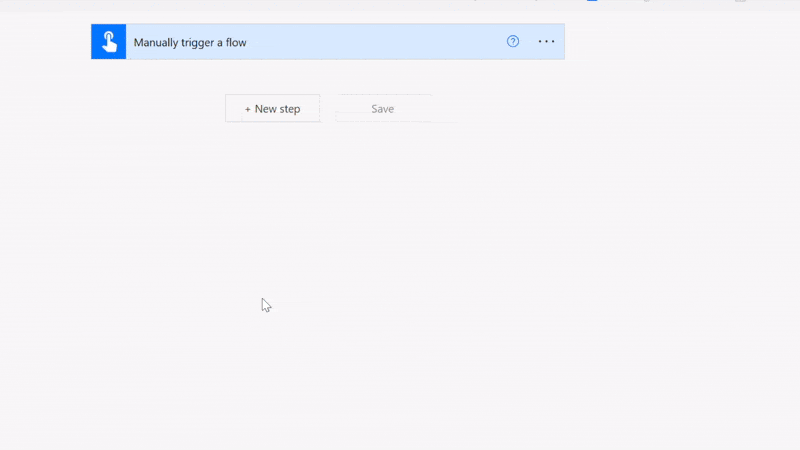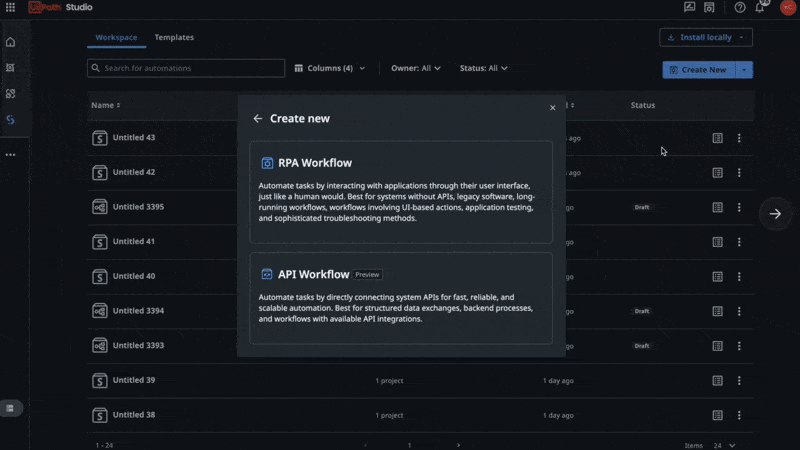We’re thrilled to announce a bidirectional integration between UiPath and Microsoft Copilot Studio. This partnership enables developers to not only embed UiPath automations and agents directly within Copilot Studio but also integrate Copilot agents in UiPath Studio—meaning developers can orchestrate across platforms.
Expanding Copilot capabilities with UiPath Agent Builder
Last year, we showcased how UiPath Autopilot could be seamlessly integrated into Teams and Copilot conversations (here). Now, this bi-directional integration between Microsoft Copilot Studio and UiPath Studio unlocks new use cases and scenarios and helps our mutual customers solve unique business challenges.
Graham Sheldon, UiPath Chief Product Officer, highlighted the significance of this partnership: “We believe in the power of people, agents, and robots working together to solve tough, ambiguous business problems,” he said. “This collaboration with Microsoft brings the promise of agentic automation and orchestration to life for our customers, offering unparalleled capabilities and flexibility.”
UiPath has enhanced their Power Platform connector to enable the integration of UiPath agents and automations directly into Copilot Studio. Developers can build actions, topics, or agent flows that include UiPath agents and automations with ease.

Once the delegated task is complete, the UiPath agent closes the loop using an API trigger to hand back to Copilot and continue the process. This enables Copilot Studio agents to work across Microsoft 365 and activity in UiPath Studio, including applications such as Outlook and SharePoint.

Real-world business processes are complex, spanning IT systems, offline documents and user actions. This integration, built with close collaboration between the engineering teams, facilitates seamless interaction between UiPath and Microsoft agents and supports orchestration across both platforms.
Joint customers can now automate and orchestrate tasks that span multiple applications, semi-structured and unstructured documents, and User actions. The bi-directional connectivity unlocks several scenarios:
- Invoke UiPath agents & automations from Copilot Studio agents: Dynamic input parameters in the connector enable Copilot Studio agents to hand off processes to UiPath agents with the necessary data required to complete the task.
- Invoke Microsoft agents from UiPath Studio: UiPath Studio activities enable the ability to use Copilot Studio agents as tools/functions in UiPath Studio, enabling UiPath agents in turn, to handoff process to Copilot Studio agents.
- Automate long-running and asynchronous processes: UiPath agents can now hand off a process back to the Copilot Studio agent to resume processing and trigger flows. This allows a Copilot Studio agent to delegate a task to a UiPath agent and wait for task completion before resuming the next steps.
Real-world applications
The UiPath Connector helps customers tap into UiPath agentic capabilities in the Microsoft platform, third-party systems, documents, and desktop applications. For example, a Copilot Studio agent monitoring a shared Outlook inbox for customers can perform email generation, intelligent case assignments, and record updates based on emails.
For specialized tasks like claims processing, it delegates to a UiPath claims agent, which leverages their Intelligent Document Processing to extract information, validate against existing data in systems of record, and input into the claims administration platform for handoff to the claims adjuster.
If an escalation is required, UiPath agents can identify the right user using Microsoft Graph and raise the exception in UiPath Action Center. Once the claim is processed, confirmation is passed back to the Copilot Studio agent for post-processing steps.
Get started today
Sangya Singh, Microsoft VP of Power Platform Intelligent Automations, noted that this integration will help makers solve complex workflows and optimize business processes. “As we expand the surface area of what agents can do in the enterprise,” she said, “we are making it easier for customers to achieve their agentic goals.”
Customers have also expressed excitement about this partnership, especially as it helps with business process automation across an organization:
You cannot automate a process in isolation; integrating across technology boundaries is necessary for real business impact. This bi-directional integration harnesses the combined strengths of Microsoft Copilot and UiPath agents to fully automate complex workflows across documents, emails, PowerApps, and enterprise systems.”
– Ramnath Natarajan, Director of Global Intelligent Automation & Integration
Johnson Controls
We look forward to seeing the many ways Microsoft and UiPath customers will leverage these new capabilities to drive their business forward. Try UiPath Connector actions in Copilot Studio today.




